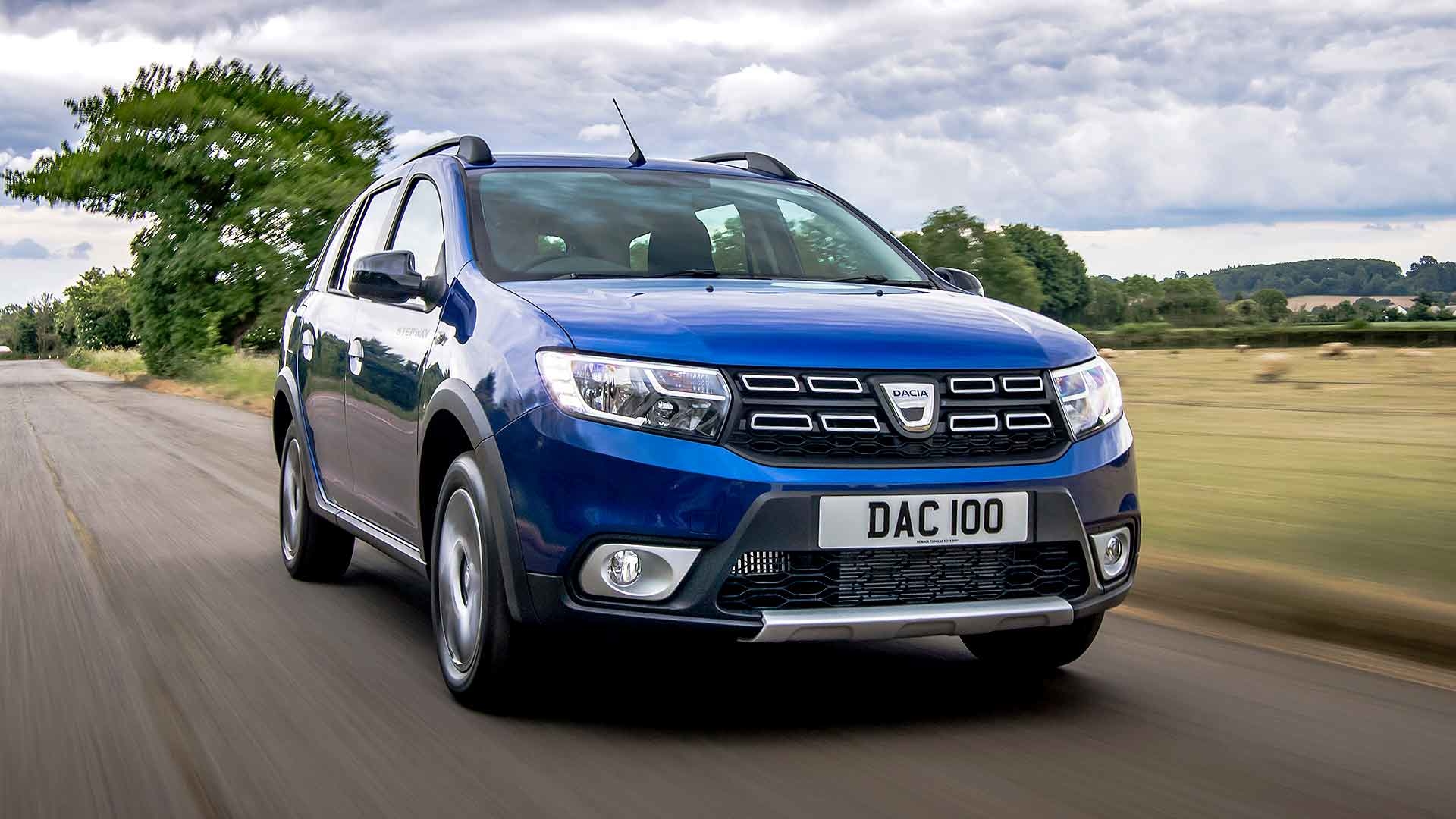
Dacia wants to revive LPG in the UK. Cleaner, greener and cheaper than petrol, it can save motorists hundreds of pounds a year on fuel costs, by costing almost half that of a litre of unleaded.
LPG was big news in the early 2000s, until the government killed it by withdrawing the generous grants. Today, Dacia not only prices its cars as if we were back in the early 2000s, it’s also taking inspiration from the retro fuel type of the noughties.
You don’t need to worry about grants making the difference these days. Dacia does all the LPG installation work on the production line, so a Bi-Fuel version costs only £400 more than a regular turbo petrol.
You’ll get that back within the first year, thanks to fuel cost savings: LPG, at the time of writing in July 2020, costs 46p a litre. Petrol is 113p a litre. That equates to almost a £2,400 saving in fuel costs over an average four-year PCP, reckons Dacia.
You even get an extra 10hp in output over the regular 1.0 TCe motor.
We’re testing the SUV-inspired Sandero Stepway supermini version, as that’s Dacia’s best-selling UK car.
We’ve already reported on Dacia’s plans for LPG in the UK, which are compelling both in terms of saving money as well as saving the planet. But how does a Dacia Bi-Fuel LPG car fare in everyday driving?
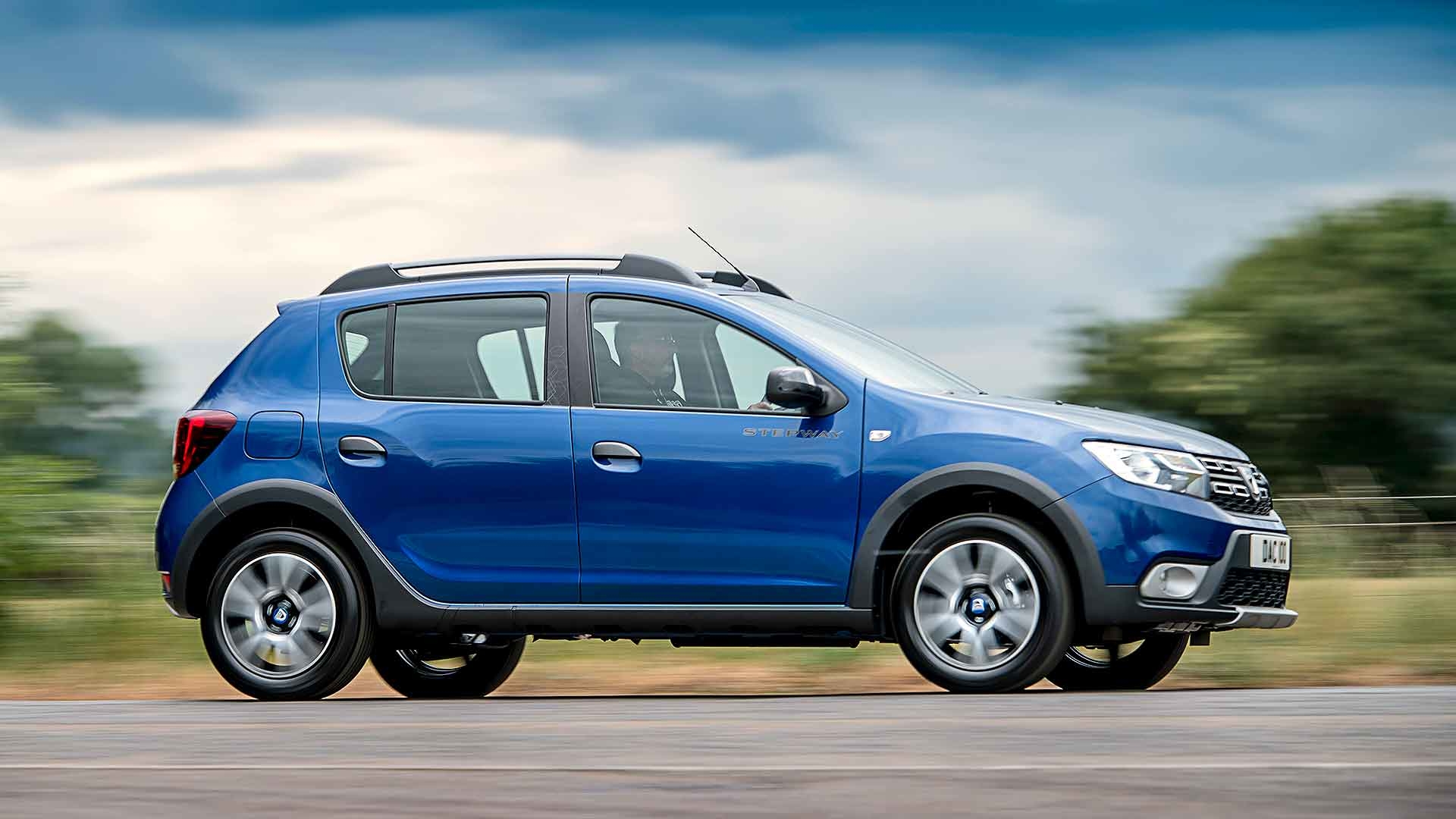
Spot the difference
There are few differences compared to a normal Sandero Stepway. You might notice one new thing when you step in: the stuck-on LPG dial on the gearlever surround. But otherwise, it’s all the same.
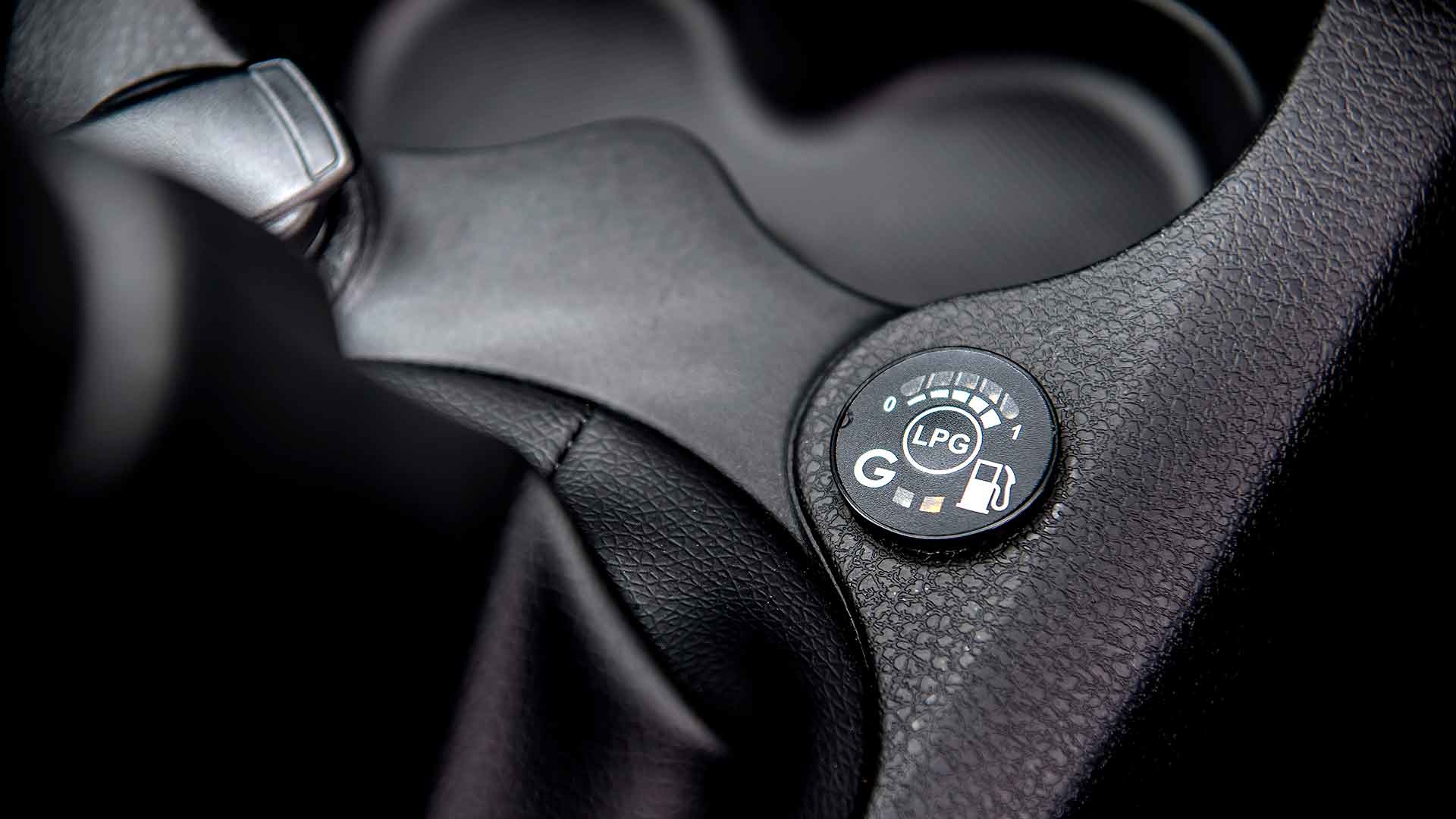
The Sandero Stepway Bi-Fuel always starts on petrol, and automatically switches to LPG when it’s ready to (usually within 30 seconds – you might hear a ‘click’ if you have the radio turned off, and notice the rev counter flutter slightly). It’s as hands-off as you wish – but you can control if it runs on LPG or petrol via the LPG dial itself.
There’s no bulbous LPG tank in the boot: it’s mounted within the spare wheel well (so keeps the same, impressive 320-litre load capacity). Even the LPG filler has been neatly located behind the fuel filler itself.
This is normalising LPG and making it as everyday as possible.
It’s in keeping with the crossover supermini Dacia’s general approach. The Sandero Stepway is value-focused supermini that trades nice-to-have luxuries for commonsense essentials. It is simple, roomy and robust.
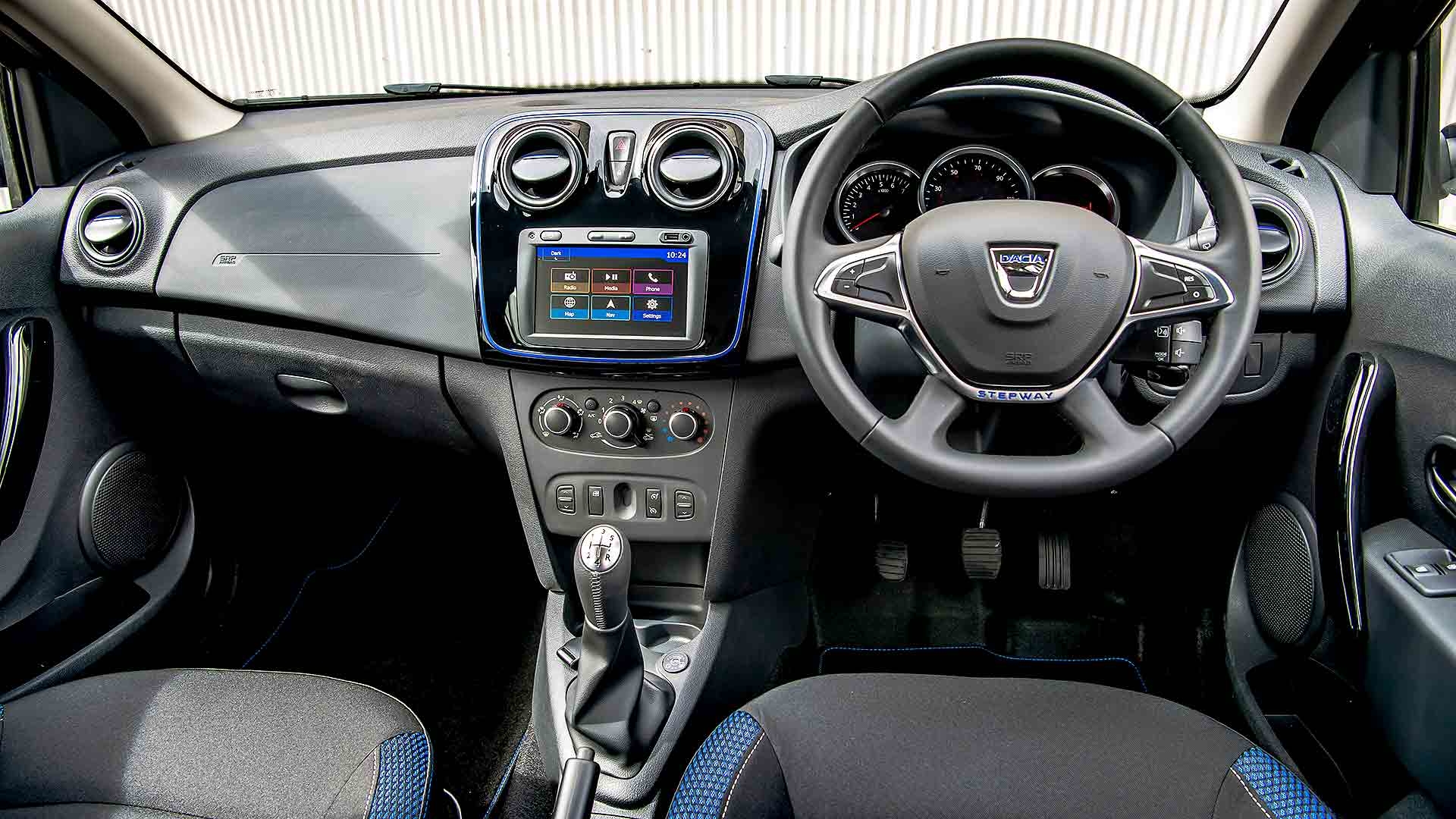
The interior is very roomy, with excellent access for front seat passengers and uncommonly soft seats for them to sit on (a bit like in an old Renault, but fortunately more supportive on long journeys).
It’s a value-priced car, so plastics are hard, but not excessively shiny. Our car was an SE Twenty version which, like mid-grade Comfort, featured a 7.0-inch touchscreen with sat nav and Apple CarPlay. This added sophistication (although the prominent ‘LG’ brand logo on start-up was odd), distracting from the dated-looking heater controls, gloomy instruments and headlight levelling dial last seen on a 1980s Renault.
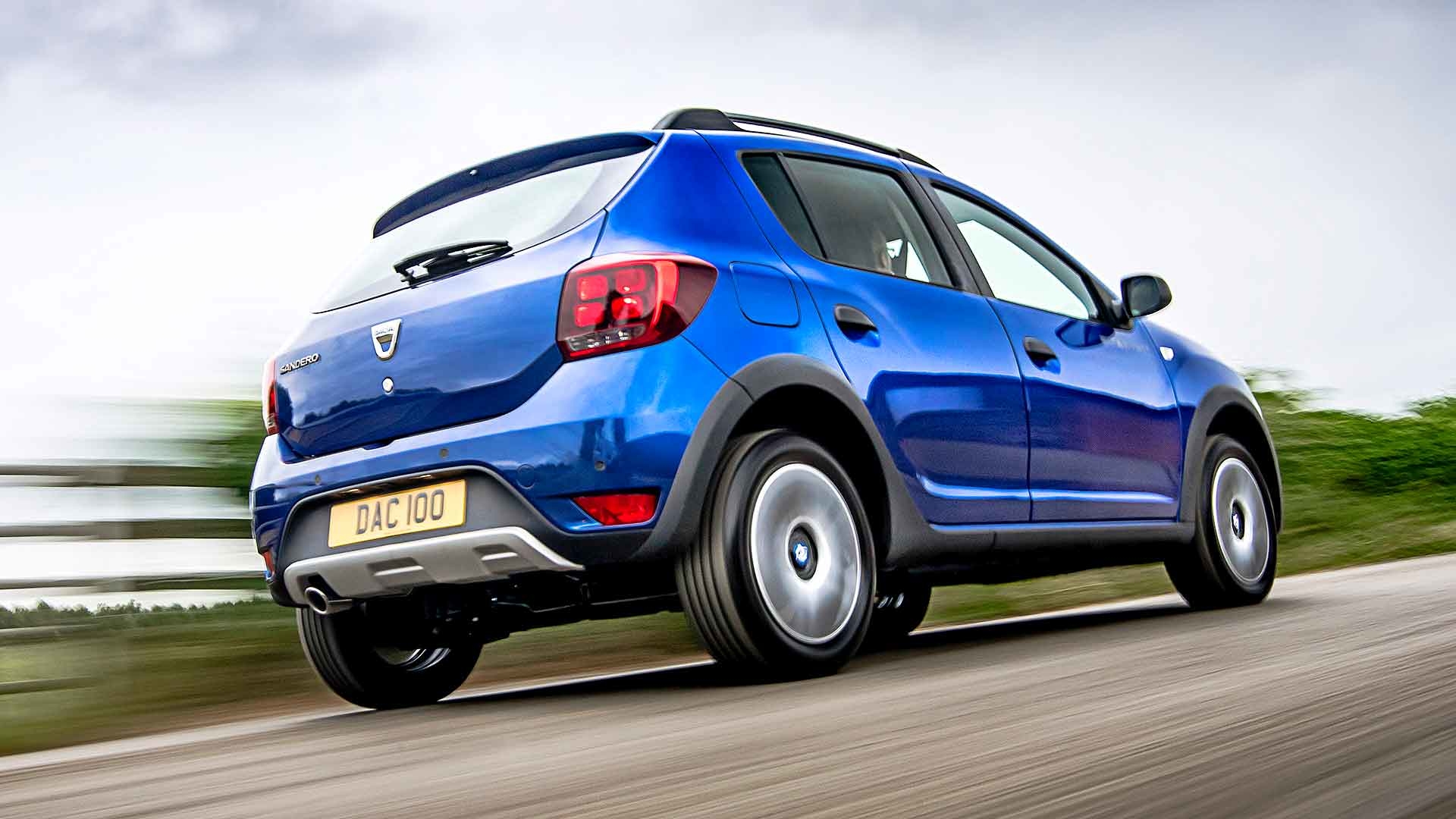
To drive, it’s a sweet, cheerful, unassuming car to drive. The suspension is noticeably softer than most modern cars, which gives it a nice, absorbent ride quality. It does lean in corners, but it doesn’t roll excessively through them. It’s not like a 1980s Renault in that regard.
Steering is a bit on the heavy side in town but it’s positive and reassuring once up to speed. It feels natural in a way many small cars today do not. The Sandero Stepway is surprisingly comfortable at motorway speeds, with low tyre noise, excellent stability and a ‘planted’ feel you don’t always get in small budget cars.
The turbo engine helps here. It’s ever-responsive, with good pulling power, and takes motorway speeds in its stride. It is refined, paired with a lovely five-speed gearbox, and serves up more than enough performance even over long journeys. The three-cylinder motor revs smoothy, too.
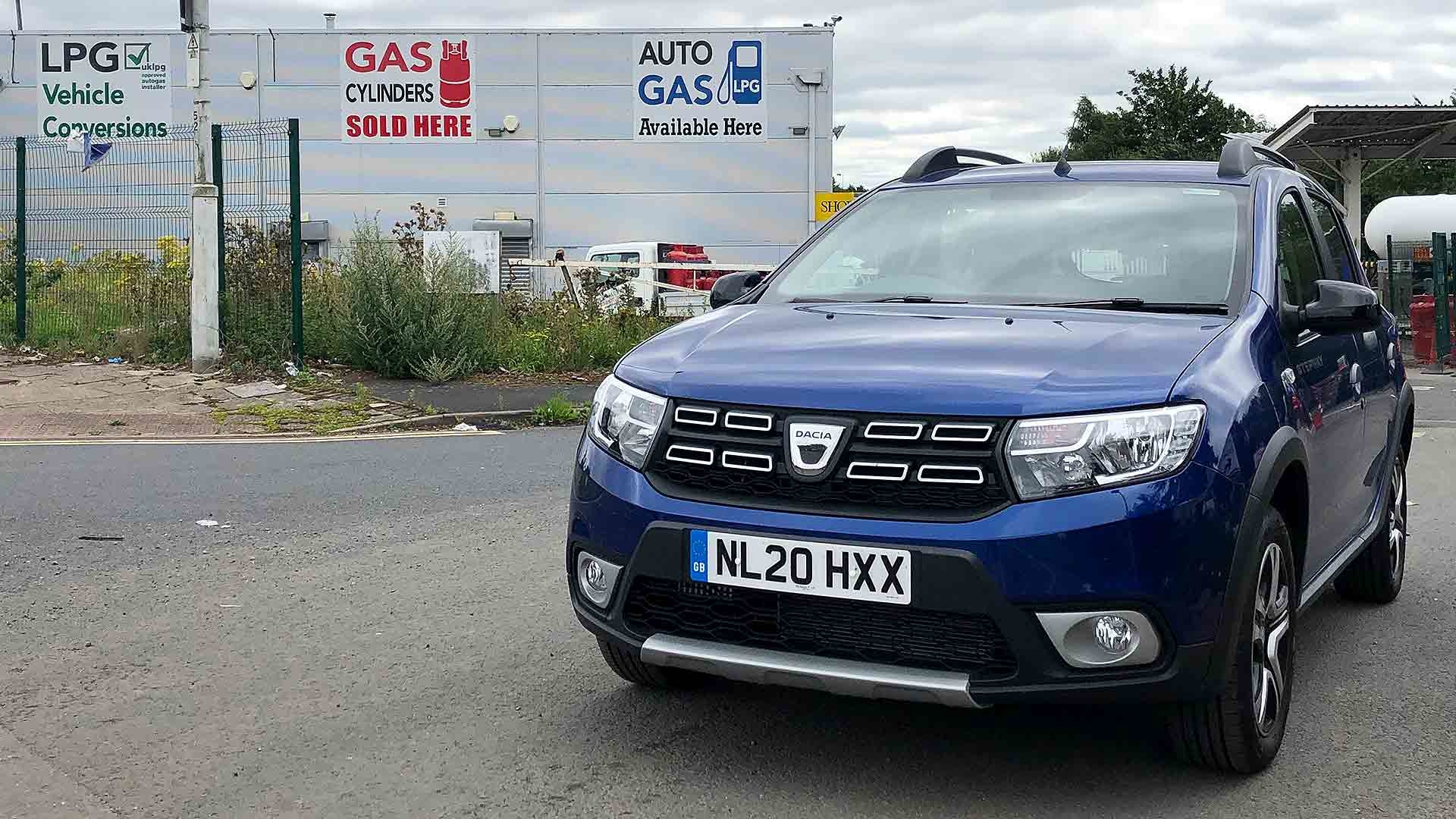
Living with LPG
You really can’t tell what fuel you’re driving on, and not just because the LED lights in the LPG gauge are so hard to read. It’s impossible to sense any difference once on the move, with petrol and LPG modes indistinguishable (and both a lot more refined than a similar-size diesel).
In an electric car, if you run out of battery charge, you stop. In an LPG car, it automatically switches to petrol – so even if you can’t buy LPG anywhere, you can still keep motoring.
This is handy if you’re in an area where LPG is unavailable: from experience, it is out there, but you have to go off the beaten track to find it (and the find-LPG website isn’t as reliable as it could be). At least you’ll be filling up in just a few minutes, rather than hours for an EV…
Fortunately, if you’re interested in buying a Dacia Bi-Fuel car, your local retailer will tell you where the nearest LPG station is – and they’ll even take you there and show you how to fill it up. Which is handy, as it’s a process that looks scary at first, but is actually really simple.
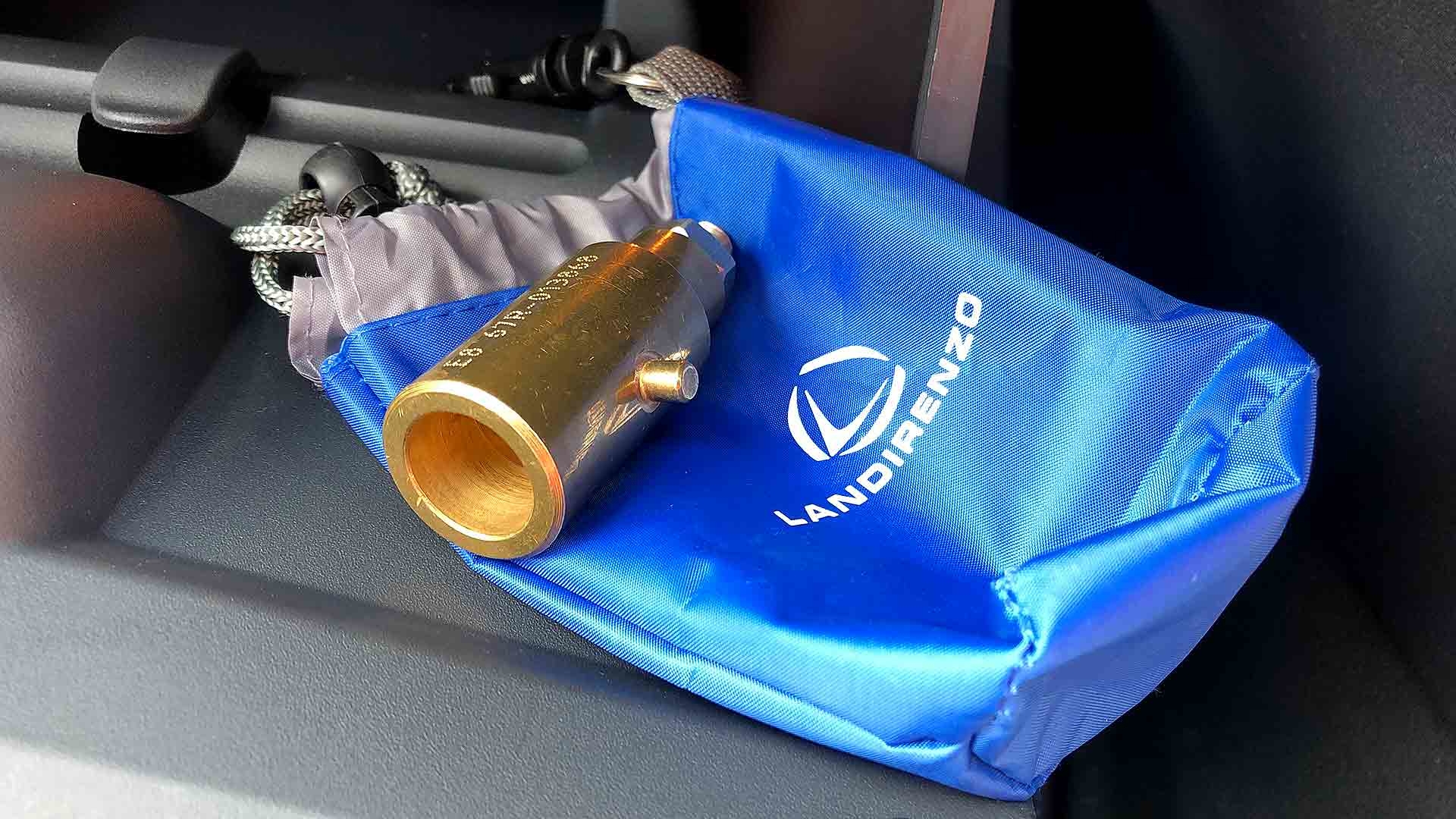
First, grab the metal adapter from the glovebox. Open the fuel filler and screw this onto the LPG nozzle. Then, take the LPG filler and clip this on with a twist. That’s it: you’re ready to start dispensing LPG.
Most LPG fillers are automatic, where you press a button to start it and it dispenses the fuel at a set rate, hands-free. Once full, they automatically switch off, or you can press a ‘stop’ button once you’ve reached your desired level. Then, press the release handle on the filler nozzle – warning, there will be a loud hiss and a small puff of LPG gas (but not actual ‘liquid’ fuel): this is because the system is pressurised. It’s not dangerous and nothing to worry about – dripping unleaded from a fuel filler nozzle is more harmful and riskier.
Then, pay: and once again, it’s like being back in the past. Fuel hasn’t cost 46p a litre since the 1990s, but that’s how much we paid during testing of the Sandero Stepway Bi-Fuel. 11 litres cost us… £5.
No wonder Dacia is so bullish. For £400 more than a regular model, buyers can pretty much more than halve their fuel bills. OK, the cars are less fuel-efficient when running on LPG (37.1mpg versus 46.3mpg), but sub-50p a litre more than outweighs 9mpg less. Dacia puts the advantage at 40 percent.
CO2 is lower, too, and LPG burns more cleanly than petrol, which reduces emissions further.
Even better, in a world where people are anxious about the range of electric vehicles, Dacia has something with double the range of a regular car – by using both LPG and petrol, more than 600 miles can be covered between refills. And all this comes with no compromise whatsoever: space is the same, drivability is the same, even the three-year warranty is identical.
The Dacia Sandero Stepway is already the best value-priced five-door supermini you can buy. Adding Bi-Fuel LPG tech to it only further underlines the appeal. For £400 more, if you have relatively easy access to an LPG filling station, it’s an absolute no-brainer.
Will it revive LPG in the UK? Well, overall, it’s a car so convincing, you may wonder why it hasn’t been revived sooner…
Specifications: Dacia Sandero Stepway Bi-Fuel SE Twenty
Price: £11,945
Engine: 1.0-litre TCe 100 three-cylinder turbo
0-62mph: 11.6 seconds
Top speed: 108mph (109mph on LPG)
Combined economy: 46.3mpg unleaded (37.1mpg LPG)
CO2: 137g/km (123g/km LPG)
Fuel tank: 50 litres (32 litres LPG)
VED car tax: £205 a year (£10 less than non-LPG)
ALSO READ
How Dacia Bi-Fuel LPG cars will save you money
My 1L 2021 Sandero Comfort Tce, only does about 7 miles to the litre, 32 mpg (UK) – mixed motoring. I suspect it pinches a bit of petrol at times.